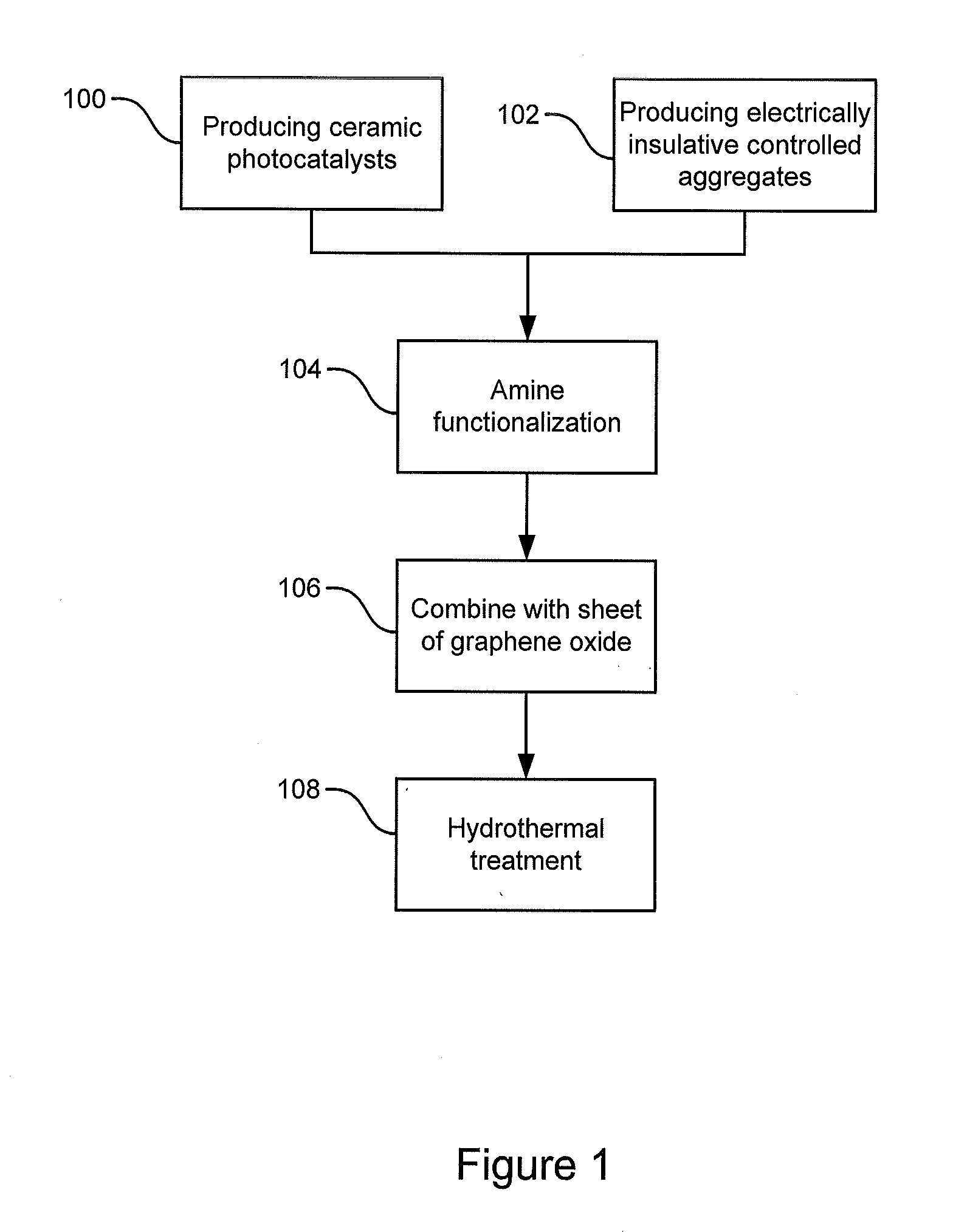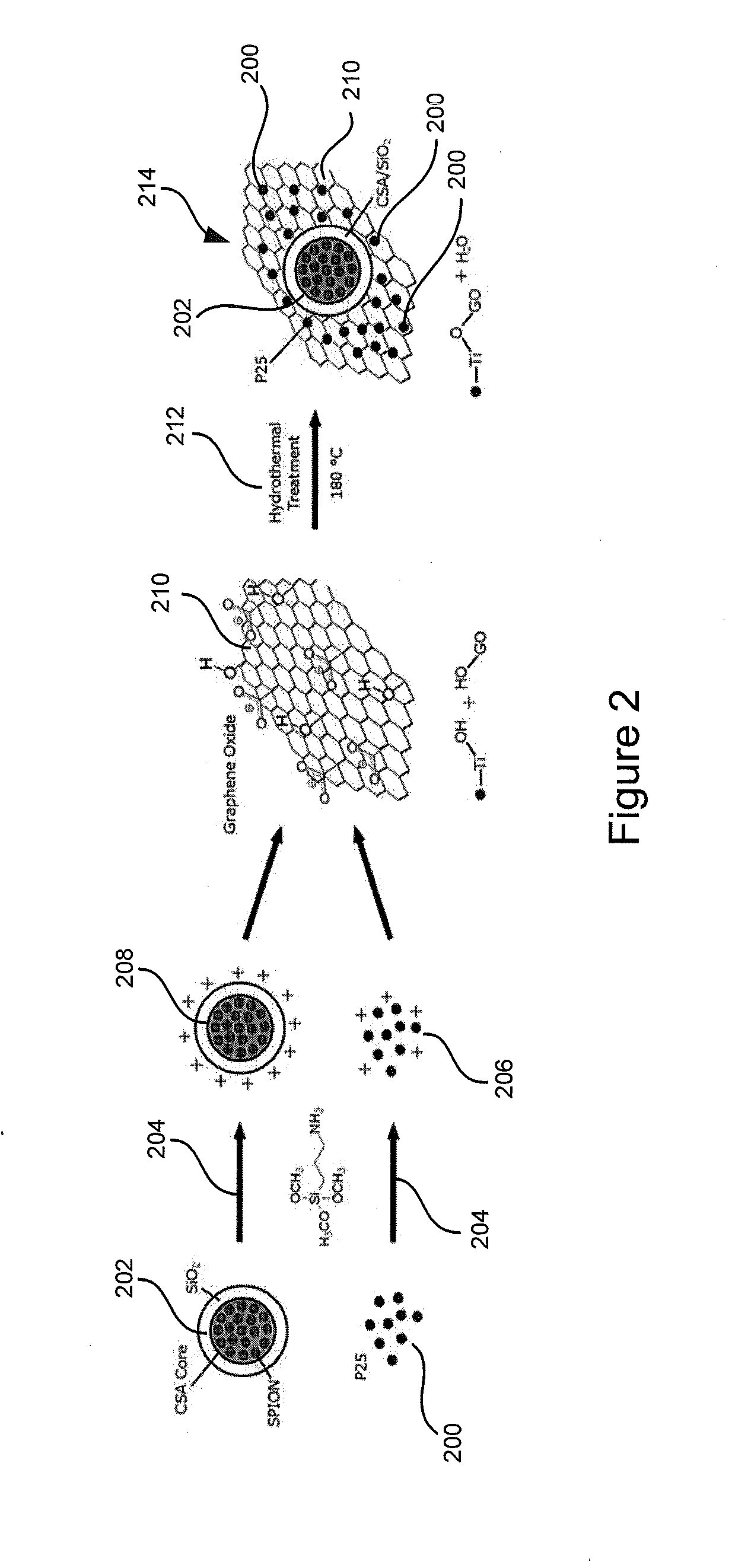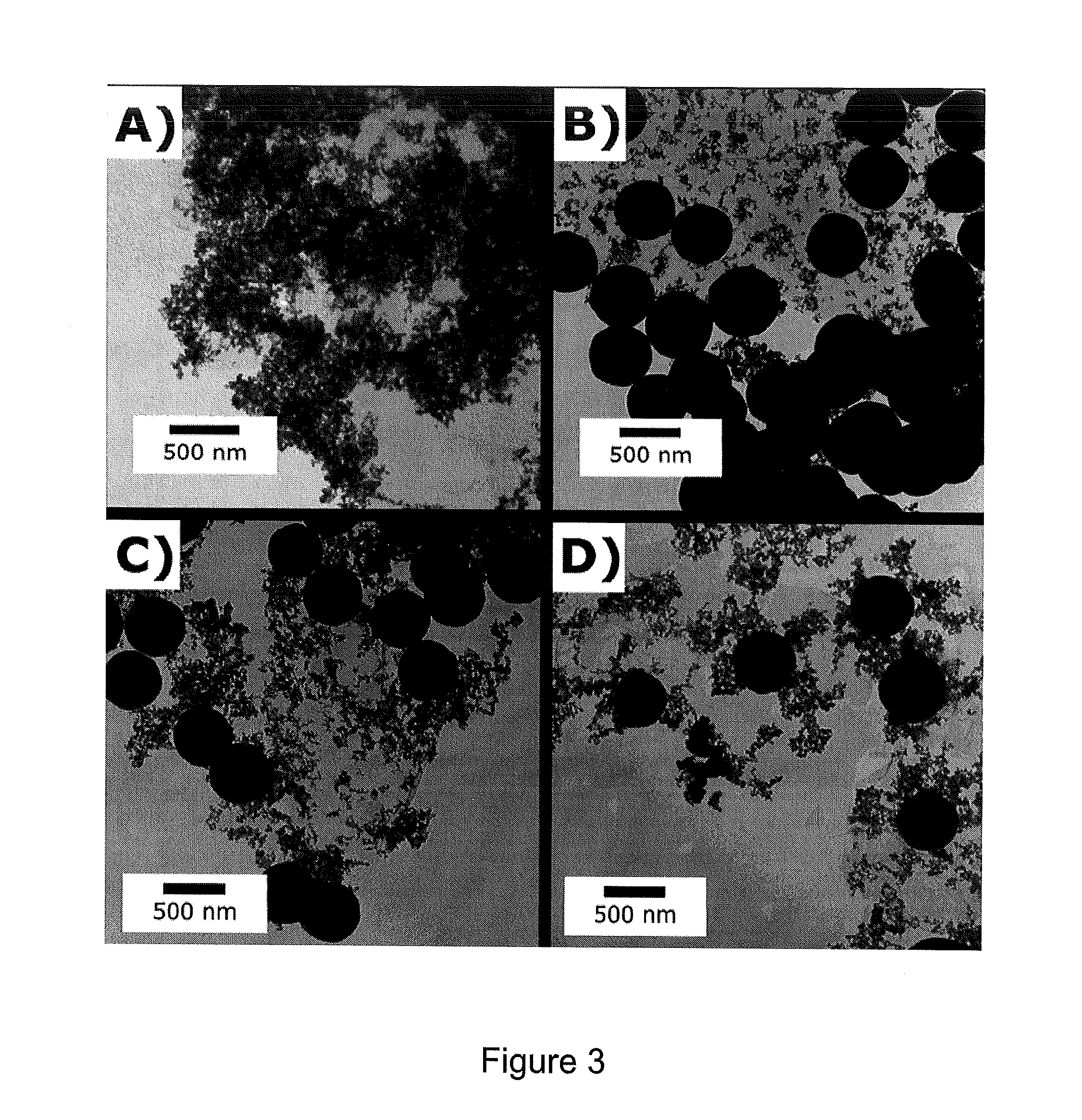Method and apparatus for producing recyclable photocatalytic particulates
a photocatalytic and particulate technology, applied in the direction of chemical apparatus and processes, catalyst activation/preparation, physical/chemical process catalysts, etc., can solve the problems of reducing the potential efficiency of the catalyst, posing an environmental threat, and finding minimal use in industrial or commercial water treatment, etc., to achieve rapid separation, reduce or prevent further aggregation, and high magnetic force
- Summary
- Abstract
- Description
- Claims
- Application Information
AI Technical Summary
Benefits of technology
Problems solved by technology
Method used
Image
Examples
Embodiment Construction
[0019]The disclosure is directed a method and apparatus for producing recyclable photocatalytic particulates. In a preferred embodiment, the recyclable photocatalytic particulate is a magnetically separable reduced graphene oxide supported titanium dioxide (TiO2) photcatalyst where the photocatalyst includes TiO2 nanoparticles and silica-coated controlled aggregates (silica-coated CSA or SiO2 / CSA), typically of superparamagnetic iron oxide nanoparticles. Both the TiO2 nanoparticles and silica-coated CSA are combined with a graphene oxide sheet. Prior to being combined with the graphene oxide sheet, the TiO2 nanoparticles and the CSA may be amine functionalized. After being combined, the entire combination may be hydrothermally treated.
[0020]Titanium dioxide photocatalysis has been previously proposed as a treatment technique for removing low concentrations of organic contaminants from water by a photocatalytic process. Although TiO2 has been specifically proposed, any metal oxide ha...
PUM
| Property | Measurement | Unit |
|---|---|---|
| volume | aaaaa | aaaaa |
| concentration | aaaaa | aaaaa |
| concentration | aaaaa | aaaaa |
Abstract
Description
Claims
Application Information
 Login to View More
Login to View More - R&D
- Intellectual Property
- Life Sciences
- Materials
- Tech Scout
- Unparalleled Data Quality
- Higher Quality Content
- 60% Fewer Hallucinations
Browse by: Latest US Patents, China's latest patents, Technical Efficacy Thesaurus, Application Domain, Technology Topic, Popular Technical Reports.
© 2025 PatSnap. All rights reserved.Legal|Privacy policy|Modern Slavery Act Transparency Statement|Sitemap|About US| Contact US: help@patsnap.com



